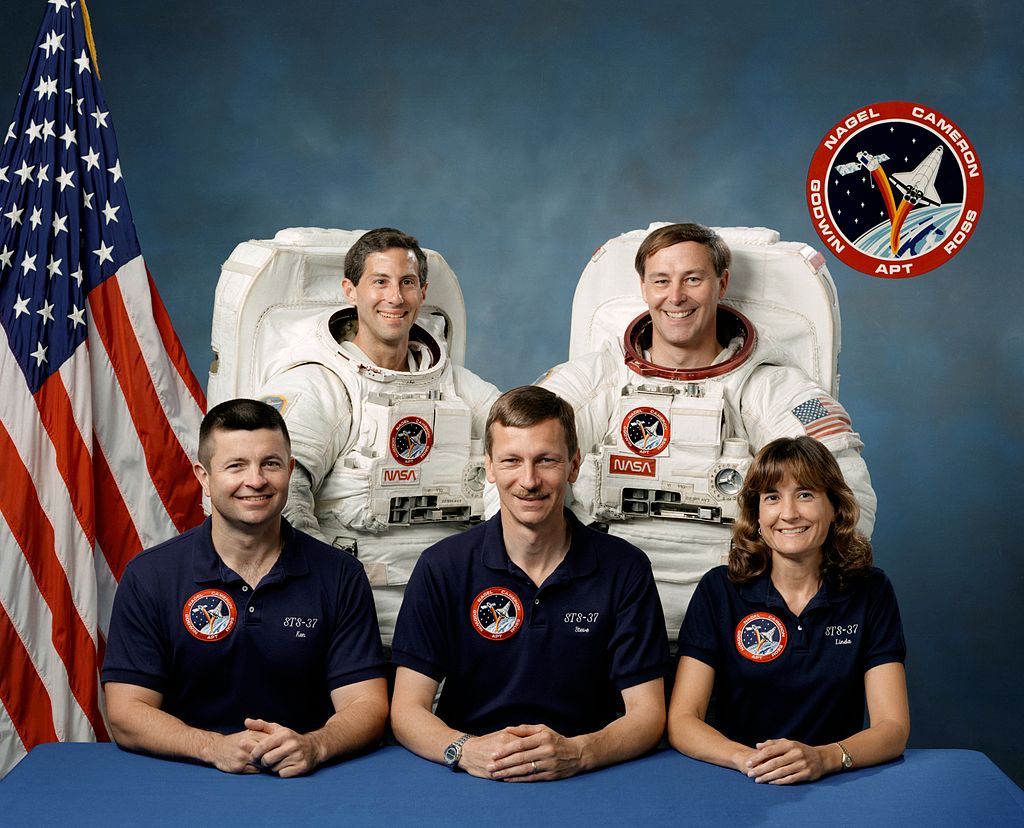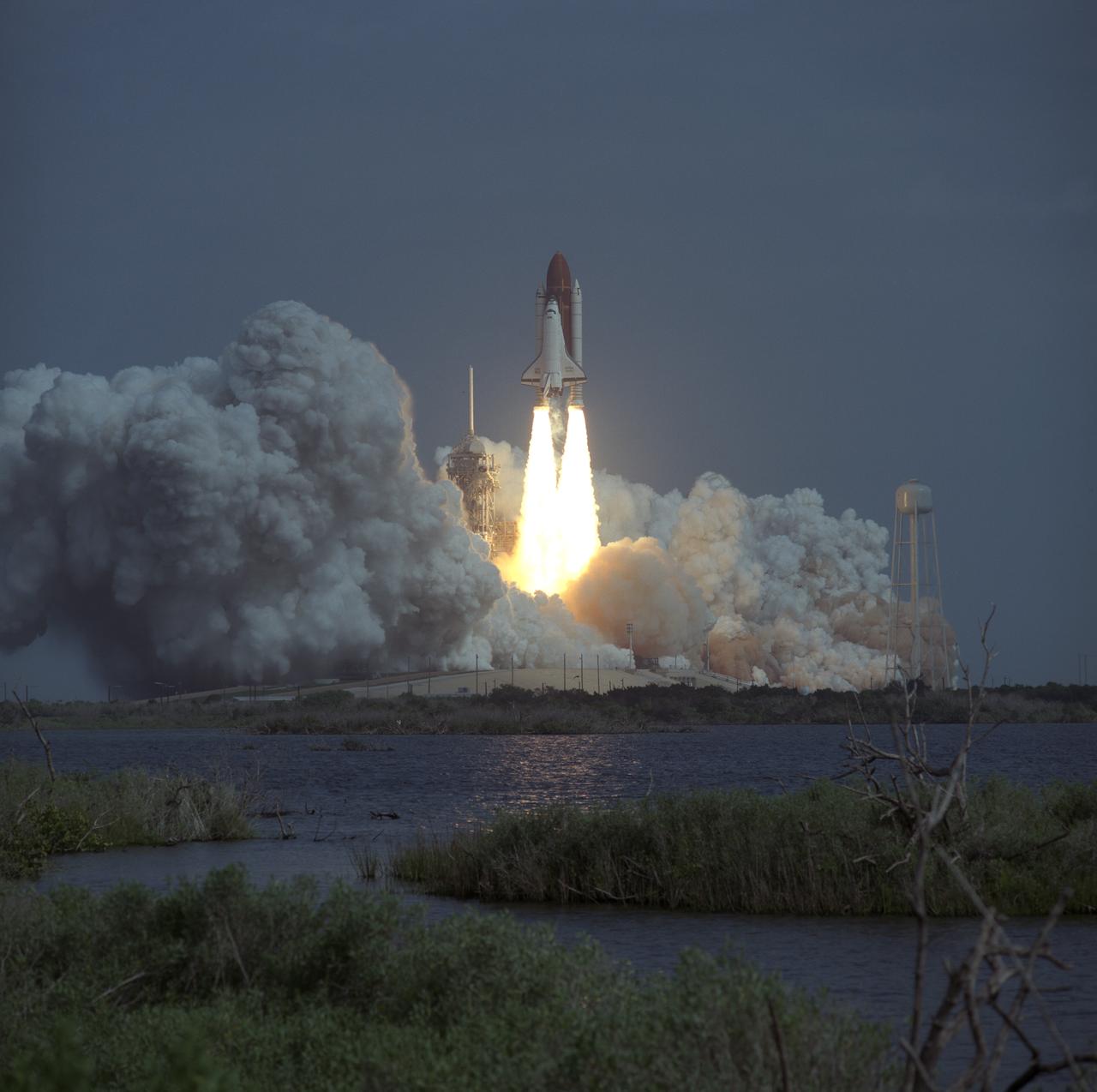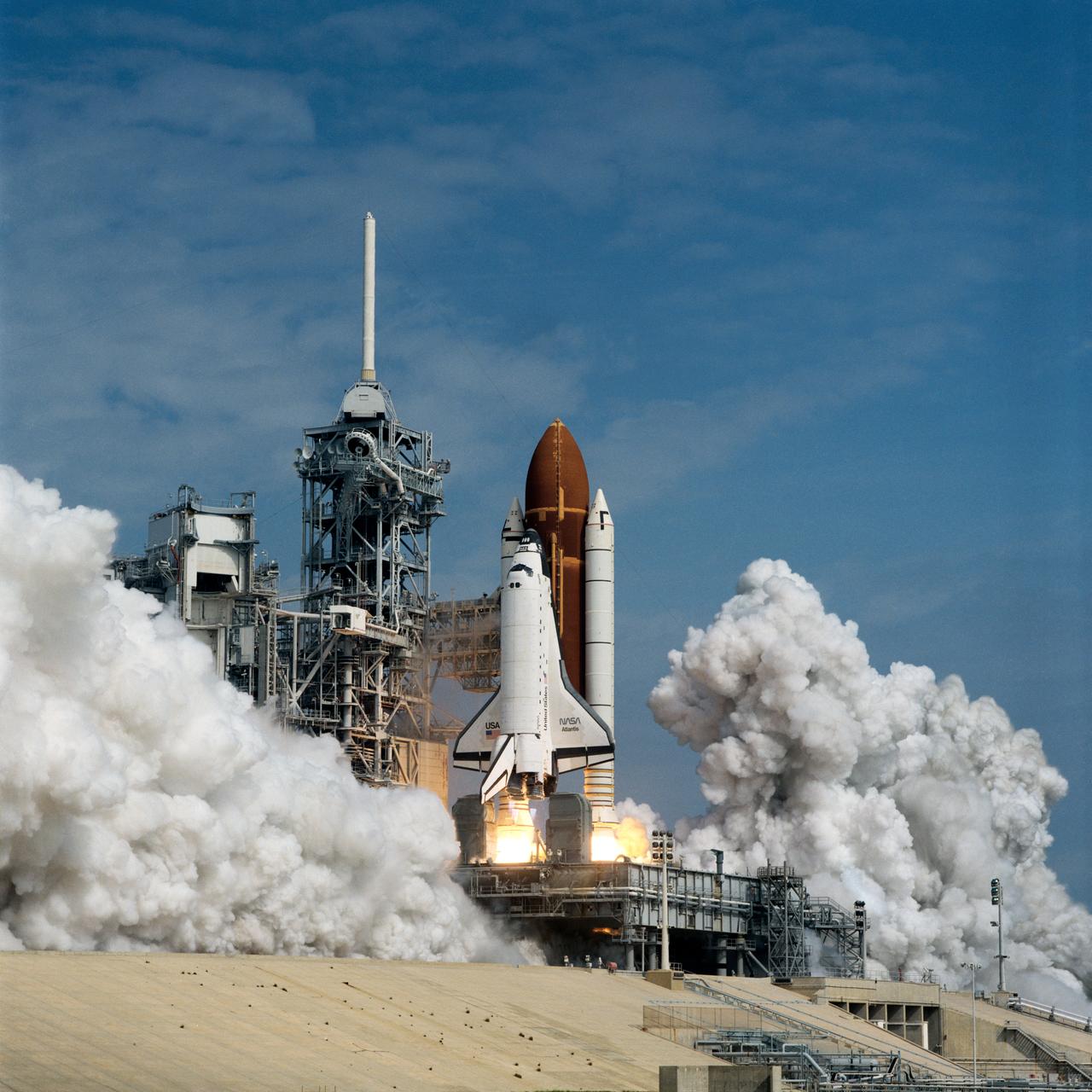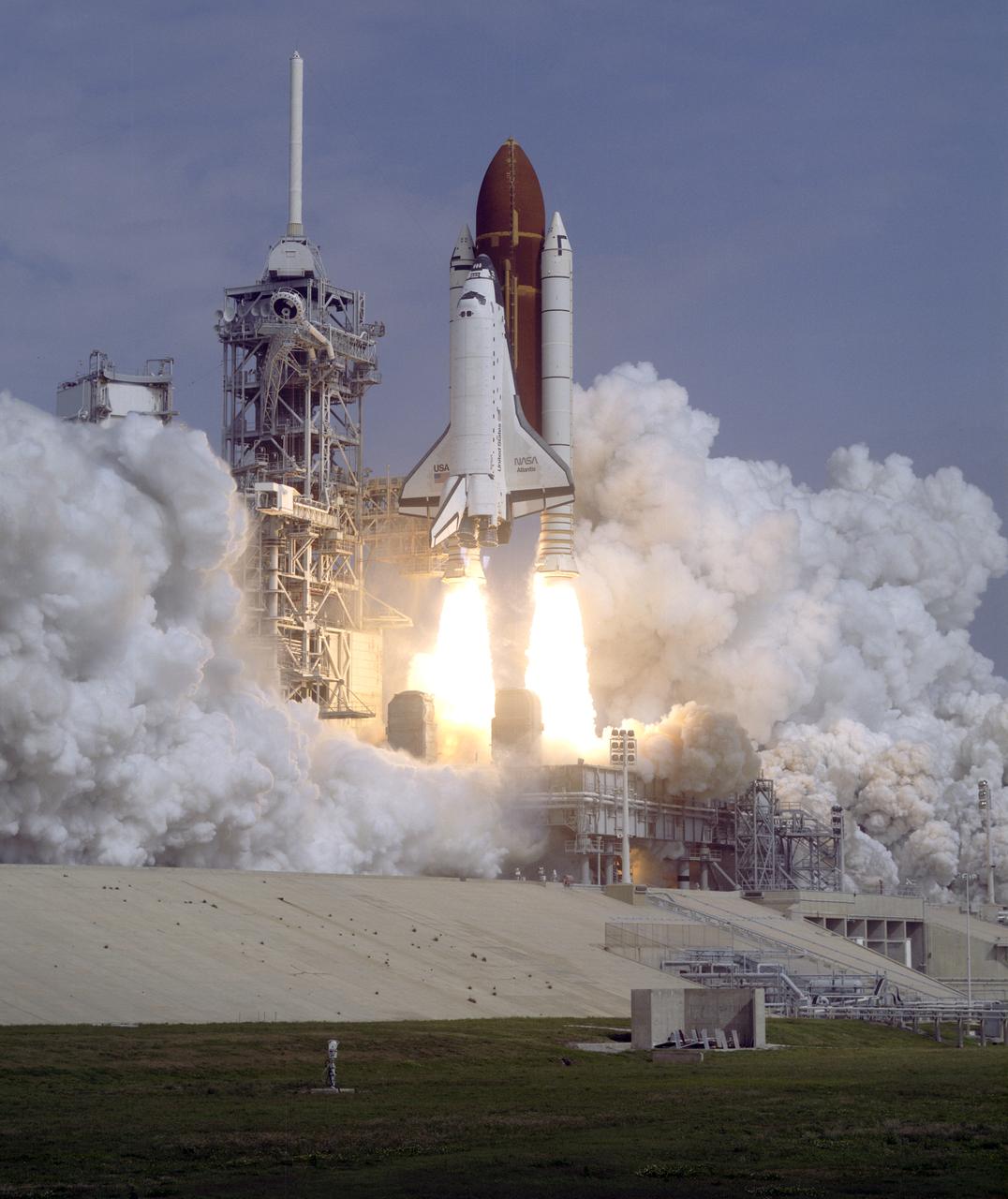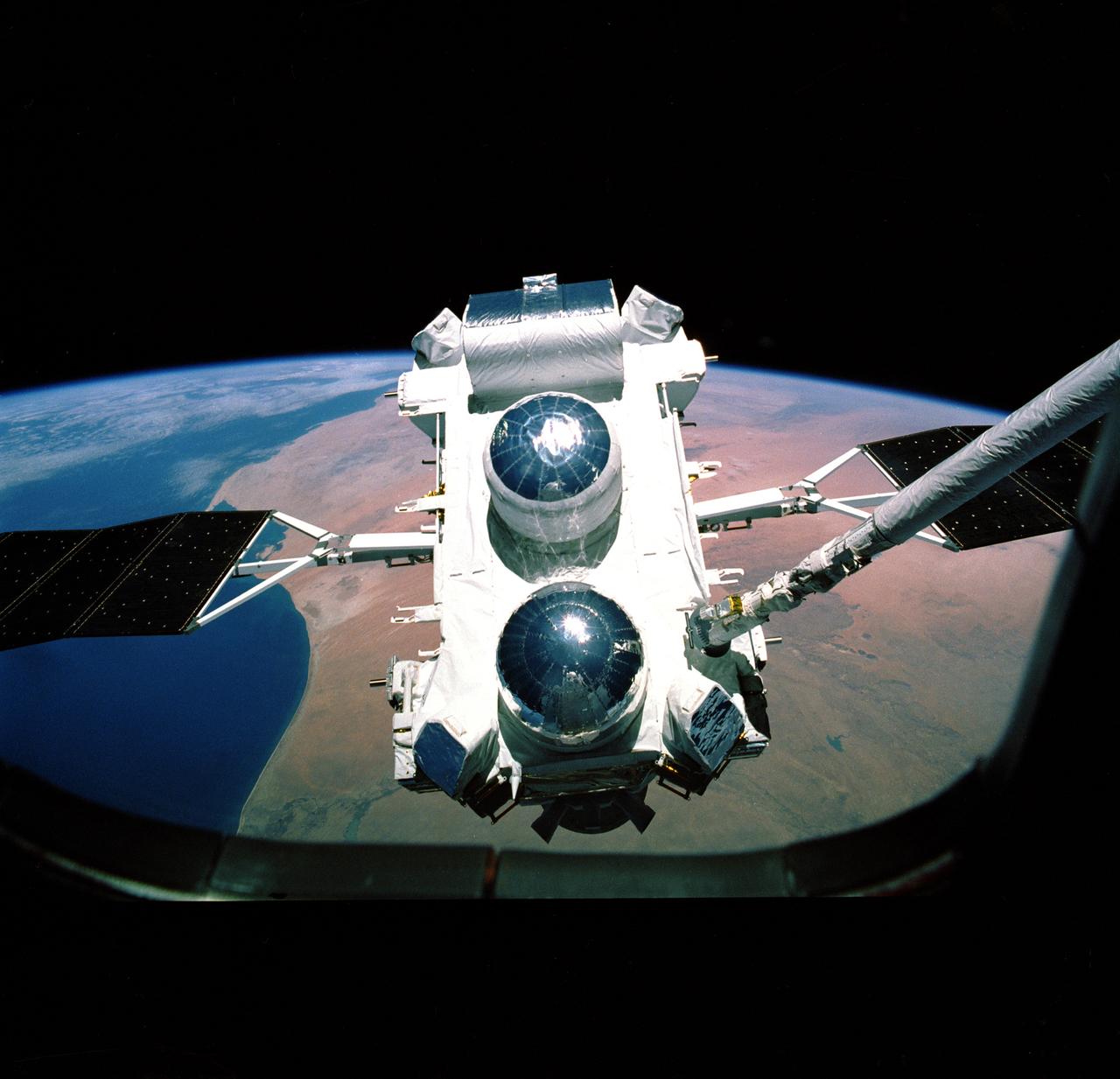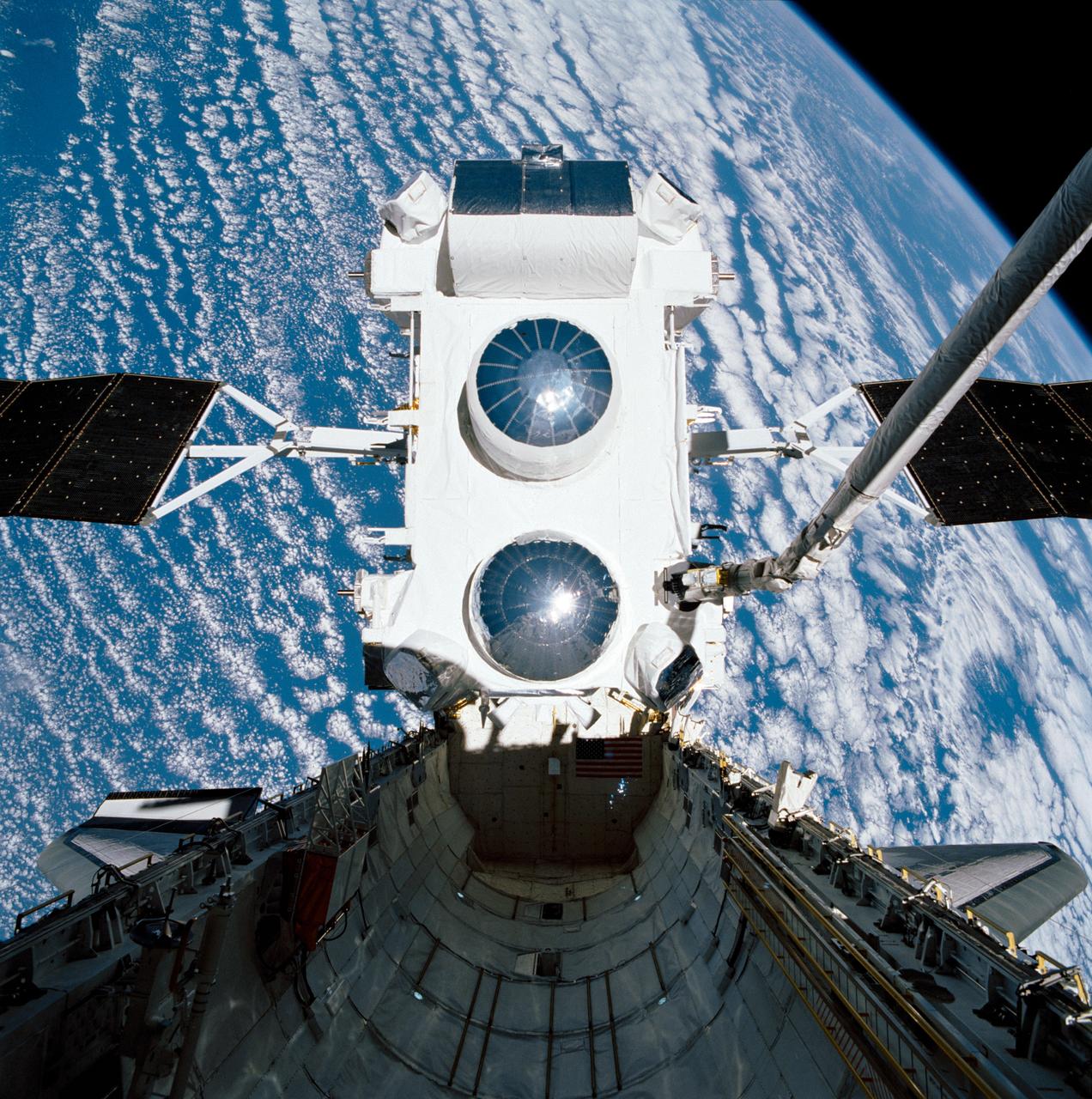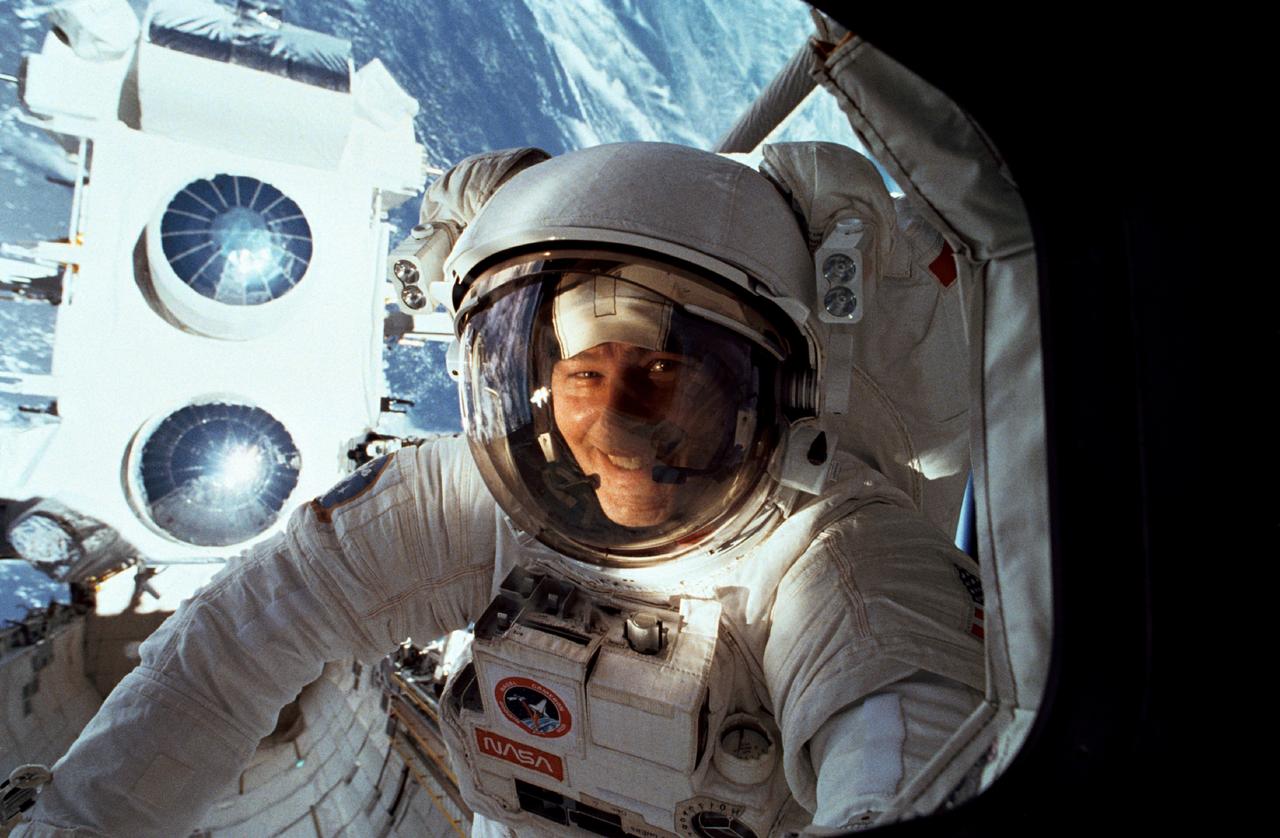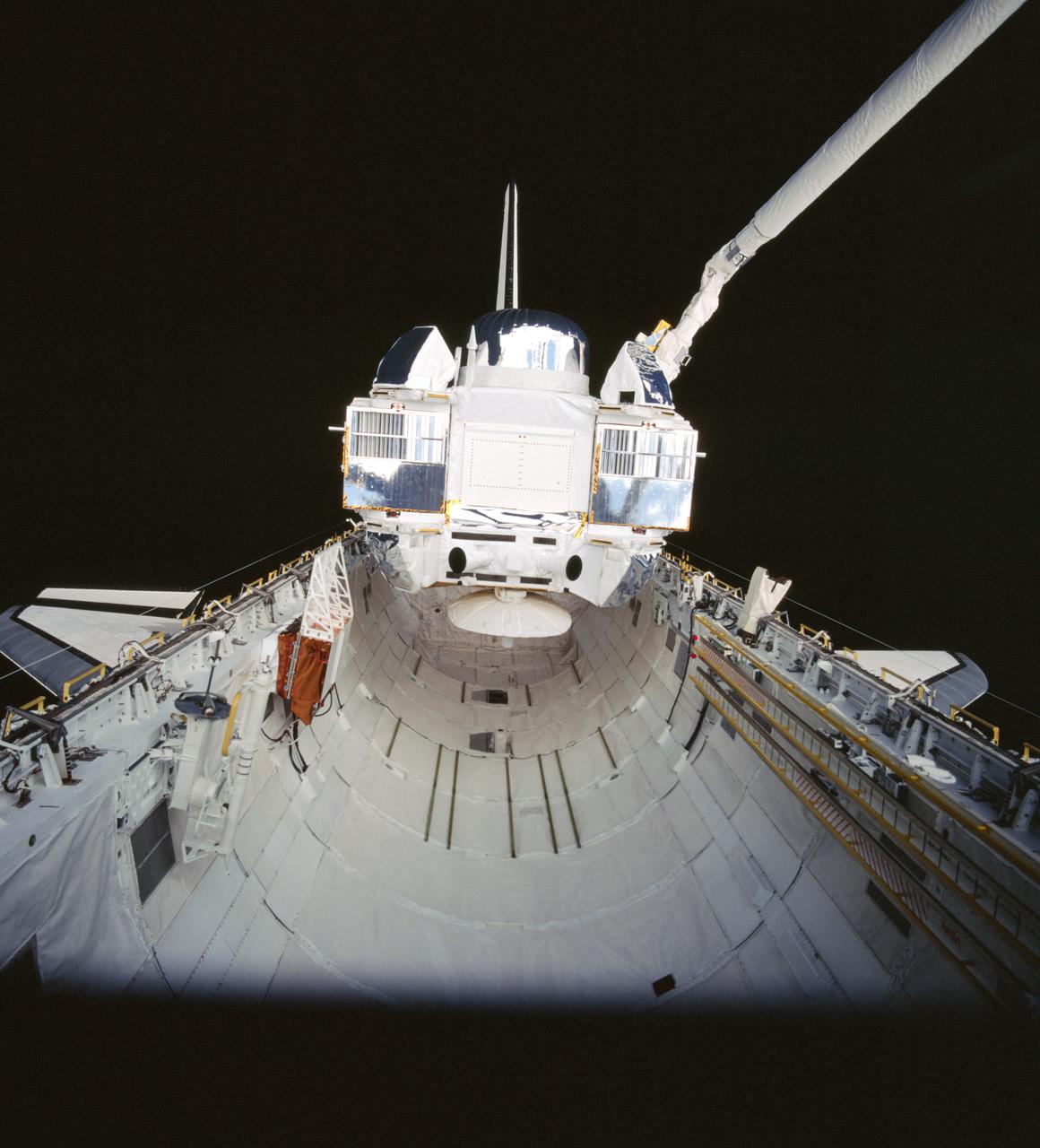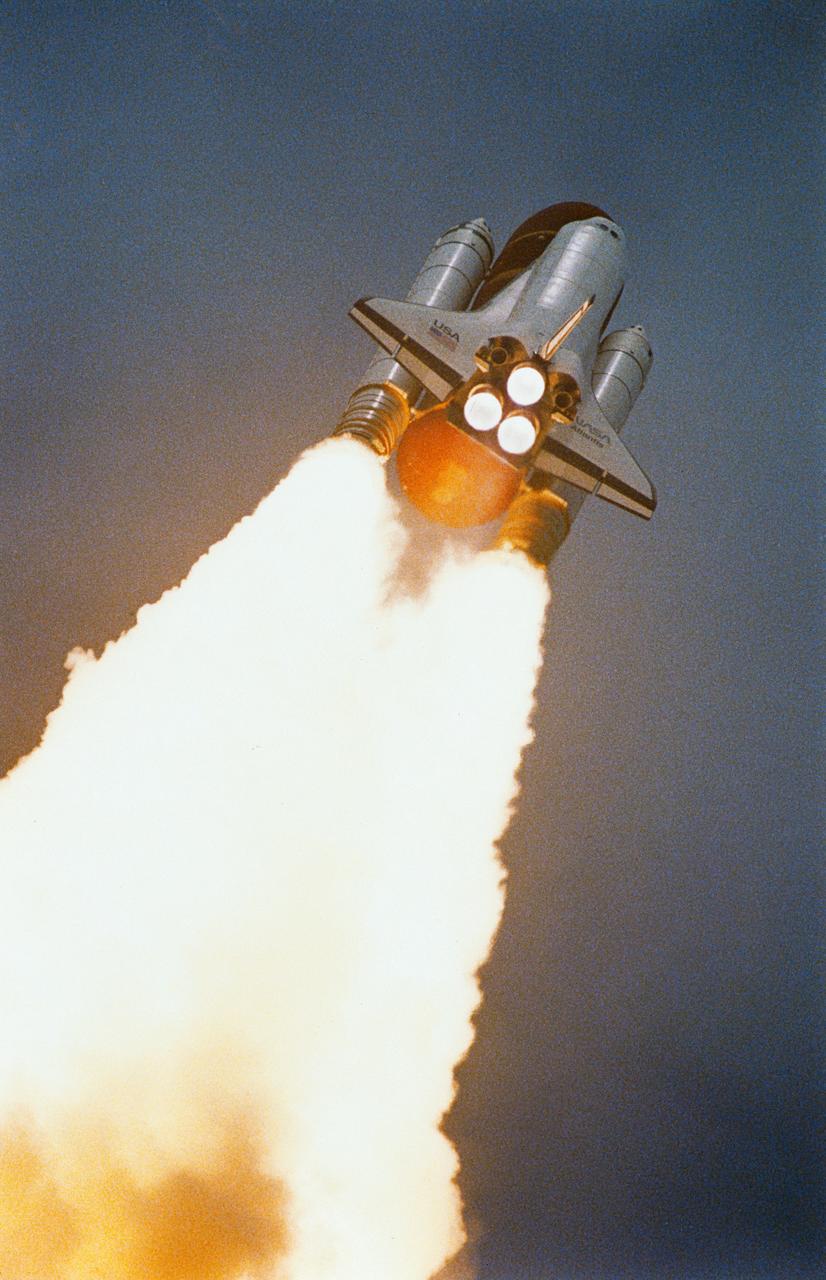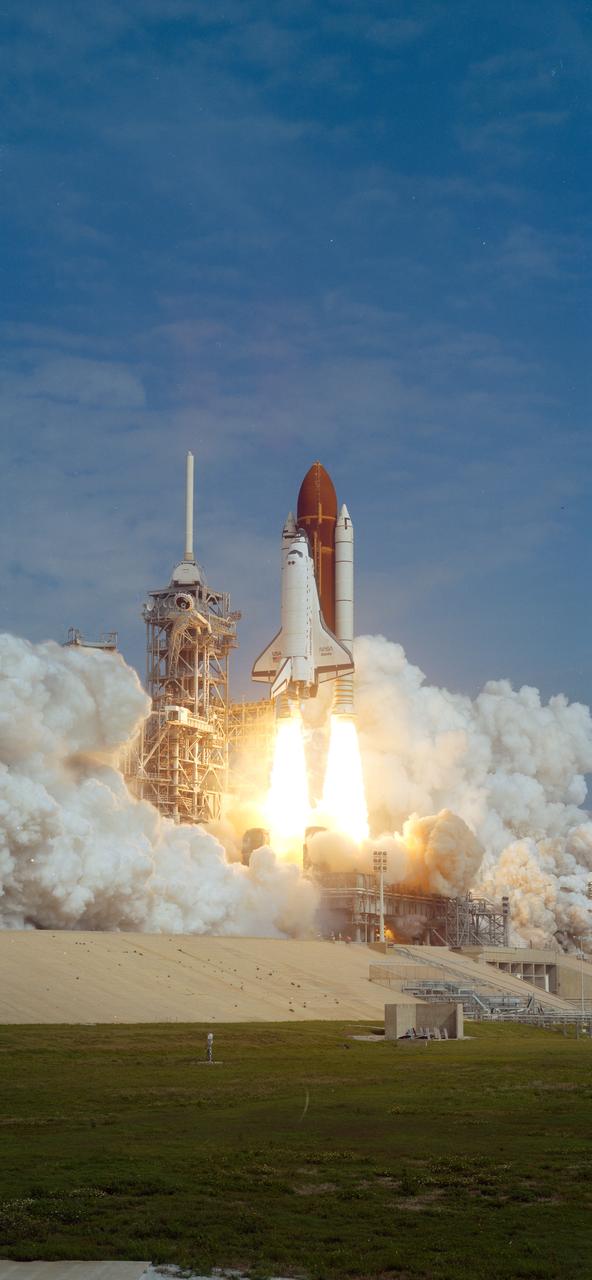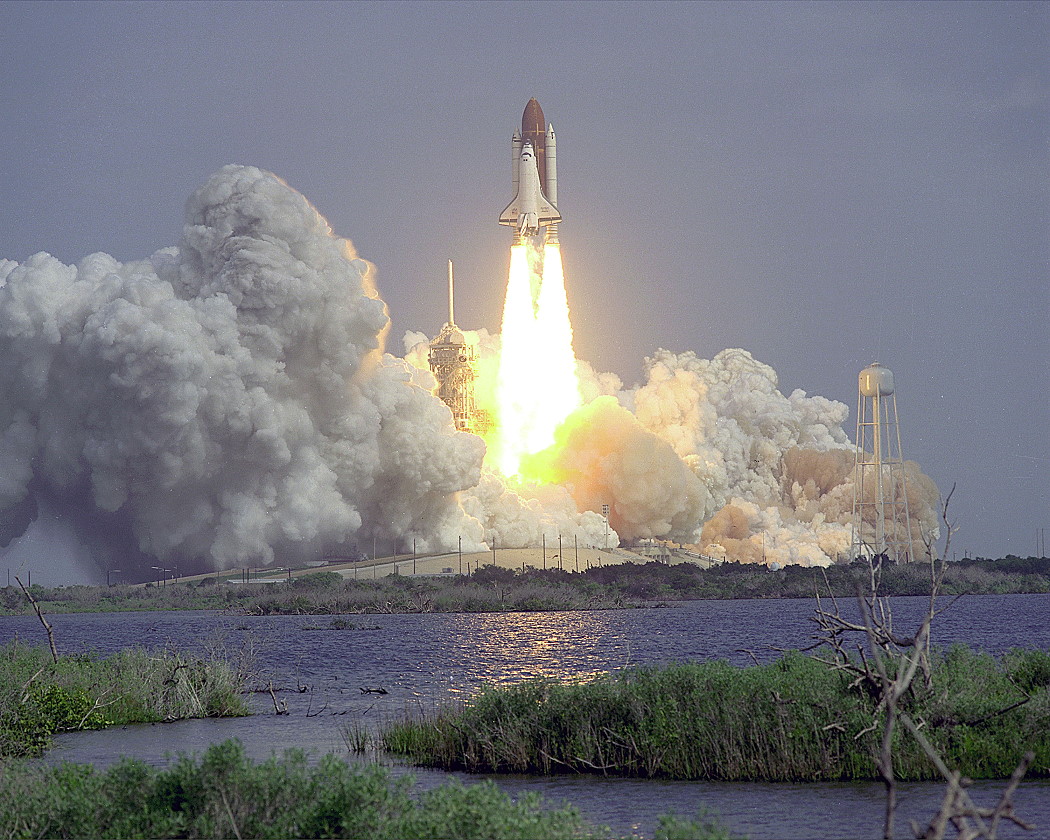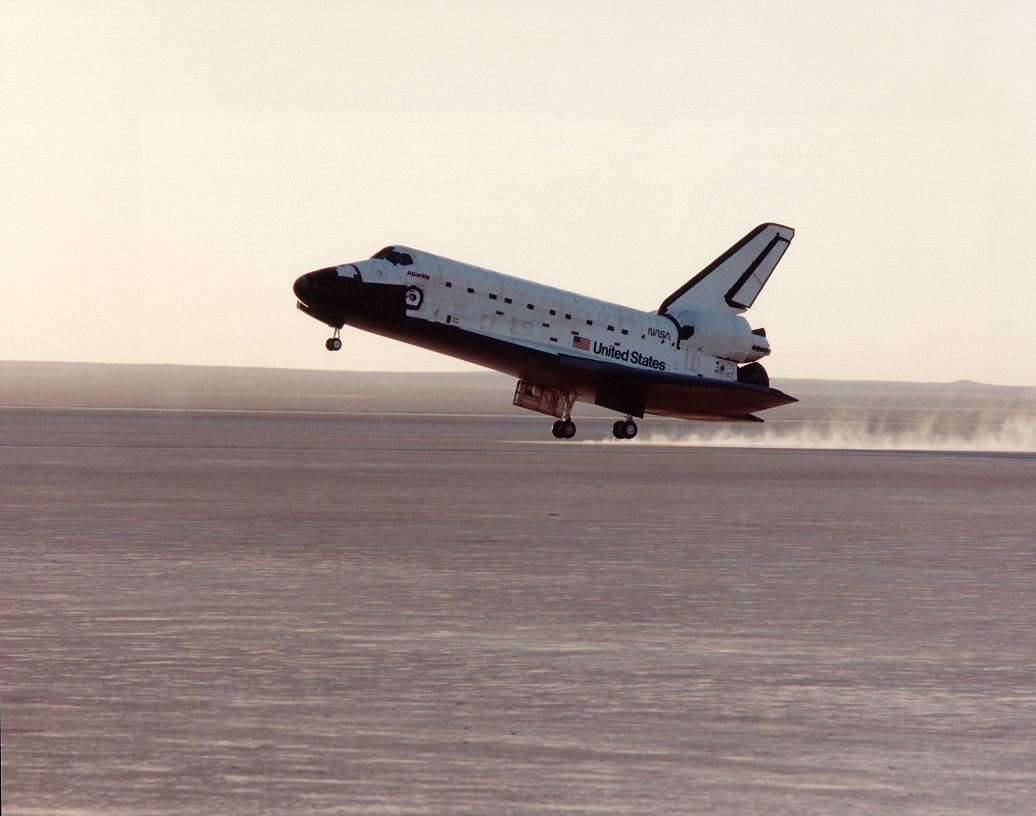STS-37 Fact Sheet
By Cliff Lethbridge

STS-37 — Atlantis
39th Space Shuttle Mission
8th Flight of Atlantis
Crew:
Steven R. Nagel, Commander
Kenneth D. Cameron, Pilot
Jay Apt, Mission Specialist
Linda M. Godwin, Mission Specialist
Jerry L. Ross, Mission Specialist
Orbiter Preparations:
Tow to Orbiter Processing Facility – November 20, 1990
Rollover to Vehicle Assembly Building – March 8, 1991
Rollout to Launch Pad 39B – March 15, 1991
Launch:
April 5, 1991 – 9:22:44 a.m. EST. Launch was delayed approximately four minutes due to low-level clouds in the launch area.
Landing:
April 11, 1991 – 6:55:29 a.m. PDT at Runway 33, Edwards Air Force Base, California. Rollout distance was 6,364 feet. Rollout time was 54 seconds. Mission duration was 5 days, 23 hours, 32 minutes, 44 seconds. Landing occurred during the 93rd orbit. Landing was delayed one day due to poor weather at Edwards Air Force Base.
Mission Summary:
The primary payload, the Gamma Ray Observatory (GRO) was deployed. The GRO high gain antenna failed to deploy on command. The antenna was deployed manually by astronauts Ross and Apt during an unplanned contingency spacewalk, the first unplanned U.S. spacewalk since April, 1985 and the first U.S. spacewalk since December, 1985.
The unplanned contingency spacewalk was the first of two spacewalks during the mission and lasted 4 hours, 26 minutes. It was conducted on April 7, 1991. Following this spacewalk, GRO was successfully deployed.
GRO science instruments included the Burst and Transient Source Experiment (BATSE), Imaging Compton Telescope (COMPTEL), Energetic Gamma Ray Experiment Telescope (EGRET) and Oriented Scintillation Spectrometer Experiment (OSSEE).
Astronauts Ross and Apt performed a second spacewalk, this one planned, on April 8, 1991. This spacewalk lasted 5 hours, 47 minutes. During this spacewalk, the astronauts tested the innovative Crew and Equipment Translation Aid (CETA) designed to more easily support movement of spacewalking astronauts about the payload bay. Space Station construction techniques were also tested.
Secondary payloads included the Ascent Particle Monitor (APM), Shuttle Amateur Radio Experiment-II (SAREX II), Protein Crystal Growth (PCG), Bioserve/Instrumentation Technology Associates Materials Dispersion Apparatus (BIMDA), Radiation Monitoring Equipment III (RME III) and Air Force Maui Optical Site (AMOS) experiment.
SELECTED NASA PHOTOS FROM STS-37
